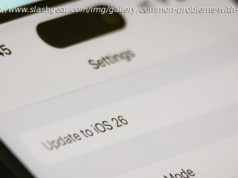Competition is good, and Edge is a good browser.
Perhaps the most surprising bit of news today was Microsoft bringing its Edge browser to Android and iOS. Selected iPhone lovers can download Edge from today, while those on Android will have to wait a little bit longer – but it’s definitely coming.
Rather than go down the path of having an open beta, Microsoft is releasing Edge for iOS via a TestFlight. This, sadly, is limited to just 10,000 users. Windows Insiders in the US can register their interest here.
The same link is also good for Android users, who can download Microsoft’s beta from the Google Play store in the coming weeks.
Edge on Android and iOS lets you access the favorites and reading list you saved on your computer. It also comes with Reading View baked-in, which offers a delightfully distraction-free reading experience.
Astonishingly, the mobile versions of Edge don’t use the EdgeHTML layout engine, but rather whatever is standard on the device. So, if you’re on Android, Edge will take advantage of Blink/Chromium, while iOS users use WebKit/WKWebView.
That makes sense in many respects. Adapting Edge in its entirety for the two incumbent mobile platforms would probably be really technologically challenging. Although some issues are the same, like dealing with different screen aspect ratios and resolutions, Microsoft would have to pay close attention to performance and battery life. In this instance, it doesn’t really make sense to reinvent the wheel.
The last time Microsoft released a browser for a platform other than its own was… what? Internet Explorer 5.2 for Mac? And it swung the axe on that in 2003 – around 14 years ago.
So, suffice to say, this is pretty exciting. And by releasing Edge for iOS and Android, Microsoft is sending a sign of confidence in its product, even if the mobile incarnations of Edge are fundamentally different to what you’d get on the desktop. Ultimately, Microsoft wants to entice users who otherwise would have passed on it.
And why wouldn’t Microsoft be proud of Edge? Although it isn’t my daily driver, Edge is a perfectly fine browser. Since Redmond released it, almost two years ago, it’s improved significantly, and now scores roughly equally with Firefox when it comes to support for HTML5 standards.
In terms of battery life, security, and performance, it performs well. It occasionally surpasses Chrome, suggesting technical competition is neck-and-neck.
Its biggest weaknesses are its relatively lackluster extension marketplace (understandable, since that feature is roughly a year old), and the fact that it’s somewhat barebones – especially compared to the likes of Opera and Vivaldi, which pack extras to the rafters.
Microsoft has been very open that this is part of its mobile strategy, as it pivots away from the wreckage of its failed Windows 10 Mobile operating system. But perhaps the launch of Edge for Android and iOS will have a secondary impact in garnering interest for Edge on the desktop, as those who previously wrote it off are re-acquainted with the brand.
And either way, competition is good, right?
Sit back and let the hottest tech news come to you by the magic of electronic mail.
Prefer to get the news as it happens? Follow us on social media.
Got two minutes to spare? We’d love to know a bit more about our readers. Start!
All data collected in the survey is anonymous.






